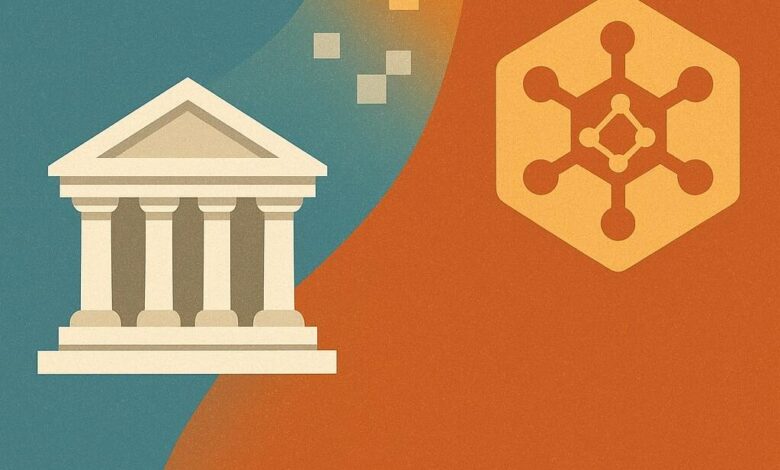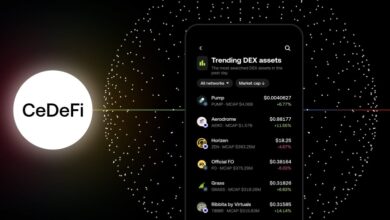Beyond Blocks and Bankers: DeFi and TradFi Are No Longer Worlds Apart

The long-anticipated fusion of decentralized finance (DeFi) and traditional finance (TradFi) may be approaching faster than expected, according to JPMorgan’s blockchain leadership.
Speaking at the RWA Summit in Cannes, Nelli Zaltsman, Head of Blockchain Payments Innovation at JPMorgan’s Kinexys platform, outlined the bank’s accelerating efforts to integrate institutional financial infrastructure with public blockchain technology.
“We’re moving toward a model that’s more collaborative than siloed,” Zaltsman said during a panel with Chainlink Labs co-founder Sergey Nazarov. “Our strategy is to be network-agnostic, bringing real-time access to clients across multiple chains, without friction.”
Bridging Onchain and Offchain Worlds
JPMorgan recently tested a cross-chain settlement pilot with Chainlink and Coinbase’s Base network, marking a significant step in enabling institutional-grade transactions using blockchain. The pilot allowed JPMorgan to synchronize settlements between its blockchain-based deposit tokens and external networks, demonstrating how digital assets can coexist with traditional systems.
Sergey Nazarov described the collaboration as an early but powerful indicator of how major financial institutions might begin operating onchain. “This is not a proof of concept for the sake of it, this is the foundation of a new capital market architecture,” he said.
Where TradFi and DeFi Intersect
The growing overlap between DeFi and TradFi is no longer theoretical. Institutional banks like JPMorgan are exploring how core financial functions, such as payments, settlement, custody, and liquidity, can be enhanced by blockchain infrastructure.
TradFi brings regulatory expertise, massive liquidity, and consumer trust. DeFi, on the other hand, offers automation, transparency, and 24/7 borderless access to financial tools. When paired, they can create a hybrid system where compliance and innovation coexist.
Zaltsman noted that tools previously seen as experimental, like smart contracts and decentralized settlement engines, are now being evaluated as viable infrastructure by legacy institutions. “Thankfully, we’re past the stage of having to build everything ourselves from scratch,” she said. “There’s now a broader ecosystem we can tap into.”
What Happens If the Convergence Becomes Reality?
If DeFi and TradFi truly converge, the financial industry could undergo one of its most significant transformations in decades. Cross-chain settlement could replace multi-day clearing times with real-time execution. Tokenized assets could offer fractional ownership of everything from equities to real estate. Banking services could become programmable, customizable, and globally accessible around the clock.
Such a shift could also democratize access to capital markets. As Nazarov pointed out, cryptographic tools now make it possible for smaller institutions or startups to prove solvency, manage risk, and compete on a more level playing field with global banks. “This could lead to a wave of innovation and competition not seen in decades,” he said.
Still, widespread adoption hinges on regulation, interoperability, and trust. According to Cointelegraph, Zaltsman emphasized that JPMorgan’s work is guided by compliance and infrastructure resilience, not hype. “Our north star is to build solutions that serve real needs in a way that aligns with both regulation and client expectations.”
A Blueprint for the Future
As companies and institutions deepen their blockchain experiments, the convergence between DeFi and TradFi appears not only possible, but increasingly inevitable.
Whether the outcome is a parallel system or a fully integrated one remains to be seen. But what’s clear is that the financial sector is preparing for a future where decentralized infrastructure is no longer at the margins, but woven into the core.





